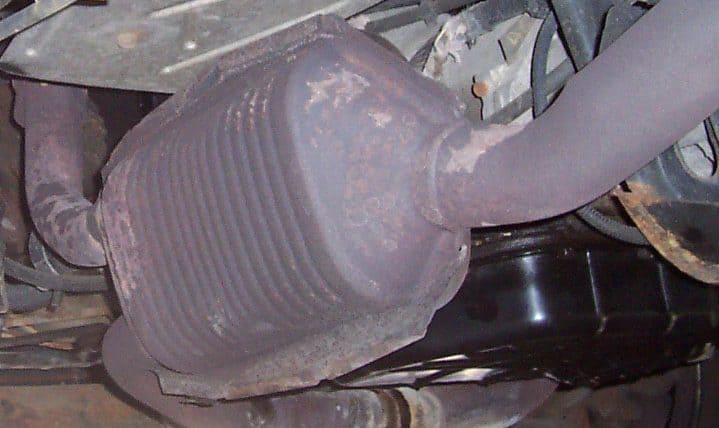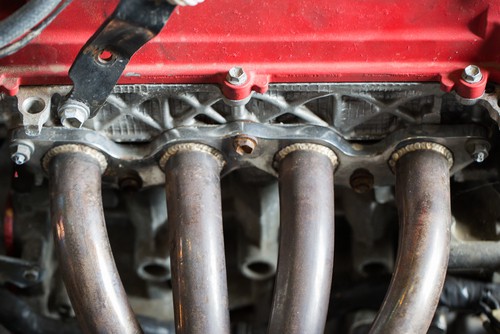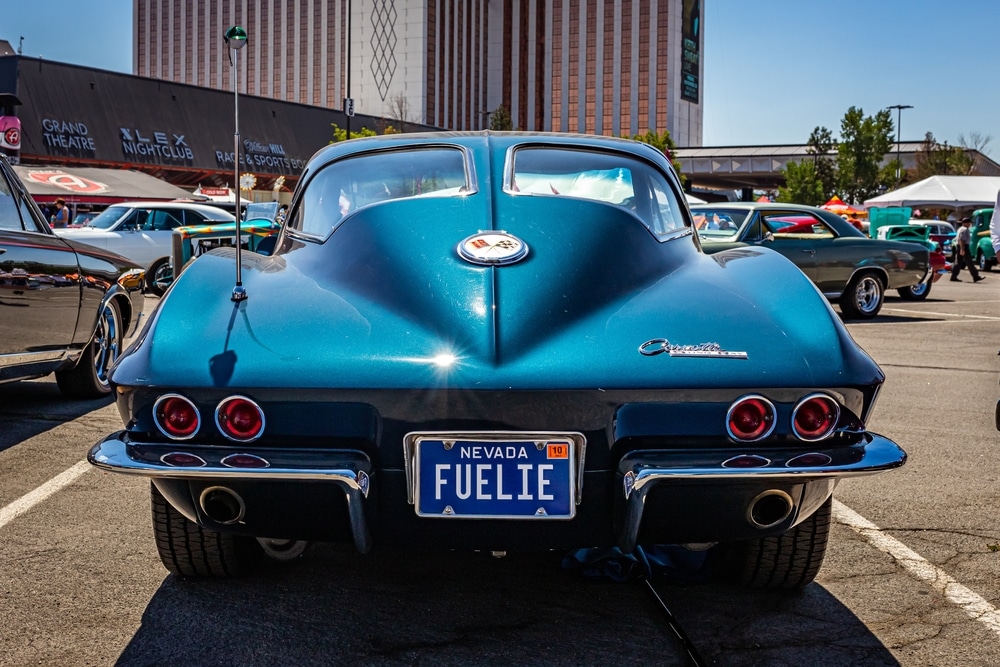Ah, the catalytic converter – that mysterious box in your exhaust system that mechanics always seem to fret about. You might be wondering if your trusty ride can still purr down the highway without one.
Well, buckle up, because we’re about to take a quick spin through the world of emissions control.

Technically, yes, your car can run without a catalytic converter, but it’s not a joyride you want to take. Removing this crucial component is like tossing your car’s environmental conscience out the window.
You’ll find yourself with a louder exhaust, potentially rougher performance, and a one-way ticket to failing your next emissions test.
But wait, there’s more! Before you start daydreaming about that extra horsepower, remember that driving without a catalytic converter is illegal in most places.
You could be facing hefty fines and a date with the police if you’re caught. Plus, you’ll be pumping out more pollutants than a coal-rolling contest. Not exactly the way to win “Neighbor of the Year,” is it?
Key Takeaways
- Driving without a catalytic converter is illegal and harmful to the environment.
- Removing the catalytic converter can lead to louder exhaust and potential performance issues.
- Catalytic converter theft is a growing problem, so consider anti-theft measures for your vehicle.
What Is a Catalytic Converter?
A catalytic converter is a crucial component of your car’s exhaust system. It’s like a tiny chemical factory tucked under your vehicle, working hard to clean up those nasty emissions before they escape into the air.
Role in the Exhaust System

You might think your car’s exhaust is just a noisy pipe, but it’s got a secret weapon: the catalytic converter. This nifty device sits between your engine and muffler, ready to tackle those harmful gases.
As exhaust fumes pass through, the catalytic converter transforms toxic pollutants into less harmful substances. It’s like a bouncer for bad gases, kicking out the troublemakers and letting the good guys through.
The main culprits it targets are:
- Carbon monoxide (that silent killer)
- Hydrocarbons (unburned fuel, essentially)
- Nitrogen oxides (those smog-forming baddies)
Composition and Valuable Metals
Now, let’s peek inside this magical pollution-fighting box. Your catalytic converter isn’t just any old hunk of metal – it’s packed with some seriously precious stuff.
The star of the show is the honeycomb-shaped core, coated with a mix of valuable metals:
- Platinum
- Palladium
- Rhodium
These metals act as catalysts, speeding up chemical reactions without getting used up themselves. Pretty smart, right?
That’s why catalytic converters are a hot target for thieves. Those precious metals fetch a pretty penny on the black market. So keep an eye (and an ear) out for your car’s little pollution fighter!
The Legal Side of Exhaust

You might think your car’s exhaust is your business, but Uncle Sam has a thing or two to say about it. Let’s dive into the red tape and potential pitfalls of messing with your ride’s emissions system.
Federal and State Regulations
The Clean Air Act isn’t just hot air. It’s the law of the land when it comes to vehicle emissions. The Environmental Protection Agency (EPA) sets the standards, and they’re not messing around.
You’ll find that it’s illegal to drive without a catalytic converter in most states. Some areas are stricter than others. California, for instance, is like the hall monitor of emissions with its CARB-compliant regulations.
Remember, your state might have its own twist on these laws. It’s like each state decided to put its own secret sauce on the federal burger. So, check your local menu before you start tinkering.
Consequences of Non-Compliance
Think you can outsmart the system? Think again, leadfoot. The penalties for driving without a catalytic converter can hit you where it hurts – right in the wallet.
Fines can range from $50 to a whopping $15,000, depending on where you live and how many times you’ve been caught with your exhaust down. That’s enough to make your bank account wheeze.
But it’s not just about the money. You might find yourself unable to register your car or renew your plates. It’s like trying to enter a club without the right wristband – you’re not getting in.
And let’s not forget those pesky emissions tests. Without a catalytic converter, your car will fail faster than a chocolate teapot. No pass, no drive – it’s as simple as that.
Impacts of Removing the Catalytic Converter

Taking out your catalytic converter might seem tempting, but it’s not all sunshine and rainbows. You’ll face some serious consequences that’ll make you think twice before grabbing that wrench.
Environmental and Health Effects
Say goodbye to clean air if you ditch your cat! Without a catalytic converter, your vehicle will spew out higher levels of harmful pollutants like carbon monoxide, hydrocarbons, and nitrogen oxides. These nasties contribute to smog, acid rain, and respiratory issues.
Your neighbors won’t be thrilled either. The increased emissions can worsen local air quality, potentially affecting those with asthma or other breathing problems. Plus, you’ll be single-handedly undoing years of progress in reducing vehicle emissions. Way to go, Captain Planet!
Performance and Legal Penalties
You might notice a slight boost in horsepower without that pesky converter. A 90-horsepower car could gain 2-3 horsepower after removal. But don’t get too excited – it’s not worth the trouble.
Your wallet will take a hit when you inevitably fail emissions tests. That check engine light? It’ll be your new dashboard decoration. And don’t even think about trying to register your car or pass inspection.
Legal penalties can be brutal. In New York, fines range from $50 to a whopping $15,000! You might even lose your registration. Is it really worth the risk just to hear your exhaust rumble a bit louder?
Dealing with Catalytic Converter Issues

Catalytic converter problems can be a real pain in the tailpipe. From theft to failure, these emissions-controlling devices can cause quite a headache. But don’t worry, we’ve got you covered with some handy tips to keep your converter purring.
Preventing and Handling Theft
Catalytic converter theft is hotter than a freshly welded exhaust pipe these days. Thieves are after the precious metals inside, leaving you with a roaring exhaust and a hefty repair bill. To prevent catalytic converter theft, consider:
- Installing a catalytic converter shield or cage
- Parking in well-lit areas or secure garages
- Etching your VIN on the converter
If your converter does get swiped, report it to the police ASAP. Your insurance might cover the theft, so give them a ring too. Remember, driving without a catalytic converter is like wearing your pants backward – it’s noticeable and probably illegal.
Signs of Catalytic Converter Failure
A bad catalytic converter can make your car grumpier than a mechanic on a Monday. Keep an ear out for these telltale signs:
- Rattling noise: Like you’ve got a maraca under your car
- Poor acceleration: Your ride’s got less get-up-and-go than a sleepy sloth
- Failed emissions test: Your car’s basically saying “I can’t adult today”
- Check engine light: That pesky illuminated reminder on your dash
If you notice these symptoms, don’t ignore them. A failing converter can lead to reduced vehicle performance and might even damage other engine components.
Replacement and Repair
When your catalytic converter gives up the ghost, you’ve got some choices to make. OEM catalytic converters are like the name-brand cereal of the car world – reliable but pricey. Aftermarket options can save you some cash, but make sure they’re EPA-compliant.
The cost to replace a catalytic converter can vary wildly, from a few hundred bucks to over a grand. Labor costs are usually the kicker, so if you’re handy with a wrench, you might save some dough doing it yourself.
Remember, skipping out on a replacement isn’t an option. You’ll face legal penalties and your car will pollute more than a factory in the Industrial Revolution. Plus, your vehicle’s performance will take a nosedive. So bite the bullet and get that converter replaced – your car (and the environment) will thank you.
Modifications and Alternatives
Thinking of tinkering with your catalytic converter? Hold onto your wrenches, folks! Let’s explore some options that might rev up your engine without landing you in hot water.
Aftermarket Options and Upgrades
Ever considered giving your catalytic converter a makeover? High-flow catalytic converters are like the sports cars of the exhaust world. They’ll let your engine breathe easier while still keeping those pesky emissions in check.
But wait, there’s more! Ceramic-coated converters are the cool kids on the block. They can handle higher temperatures, which means less chance of overheating and clogging. It’s like giving your exhaust system a fancy heat-resistant suit.
Don’t forget about those oxygen sensors! Upgrading them can help your engine run smoother than a buttered-up piston.
Pair that with some high-quality gasoline, and you’ve got a recipe for efficiency that’ll make your wallet smile.
Converting to a ‘Straight Pipe’ System
Now, let’s talk about the rebel of the exhaust world – the straight pipe. It’s like removing your car’s muffler and letting it sing at the top of its lungs. Your car will run without a catalytic converter, but be warned: it’s not exactly a quiet affair.
Straight pipes can give you a bit more horsepower, sure. But they come with a side of legal trouble and a heaping helping of noise. Your neighbors might not appreciate the 6 AM wake-up call when you start your car.
Remember, removing or bypassing your catalytic converter is like trying to sneak past the emissions bouncer at the car club. It’s illegal in most places and can lead to some hefty fines.
Plus, your car might fail emissions tests faster than you can say “check engine light.”
Frequently Asked Questions
Driving without a catalytic converter raises many questions. Let’s address some common concerns about this situation.
How long can you keep driving your trusty steel steed without that shiny catalytic converter?
You can drive without a catalytic converter for a while, but it’s not recommended. Your car will run, but it’ll spew out more pollutants than a smokestack at a factory reunion.
Think of it as your car going through a rebellious phase. It’ll work, but it’s not doing anyone any favors.
Will your car belt out a rock concert level of noise if it’s missing the catalytic converter?
Oh, you bet! Your car will sound louder than a teenager’s first band practice.
It’s like your car suddenly decided to become a rockstar. The neighbors might not appreciate your newfound “talent,” though.
Is taking a cross-country road trip sans catalytic converter a car’s version of the ‘Wild West’?
While it might feel adventurous, it’s more like playing automotive Russian roulette. You’re risking fines, poor performance, and possibly damaging your engine.
It’s less “Wild West” and more “Mild Mess.” Your car might make it, but it won’t be happy about it.
What’s the deal with the law, is it playing the role of the bad guy by making it illegal to drive without a catalytic converter?
The law isn’t trying to rain on your parade. It’s illegal in many areas because catalytic converters reduce harmful emissions.
Think of it as the law being the responsible adult at the party. It’s not fun, but someone’s got to do it.
What mysterious and bewildering symptoms will your car display if it’s running without a catalytic converter?
Your car might show some strange symptoms. You could notice decreased fuel economy, a check engine light, and that rock concert noise we mentioned earlier.
It’s like your car is going through puberty all over again. Awkward, confusing, and a bit smelly.
Is the fear of hurting your car’s engine a valid horror story when considering removing the catalytic converter?
While not an immediate concern, driving without a catalytic converter can lead to engine damage over time.
The exhaust system might not function properly, causing backpressure issues.
It’s not a horror story, but it’s definitely not a fairytale ending for your engine either.
